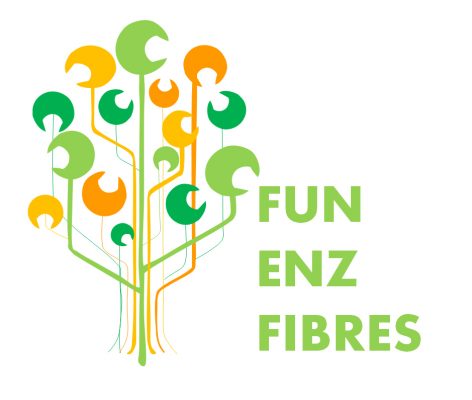From fundamentals to valorization: Enzymatic oxidation of cellulosic fibres and underlying mechanisms

Coordinator: Kristiina Kruus, VTT Technical Research Centre of Finland Ltd, Finland
kristiina.kruus (at) aalto.fi
Other partners: AT, NO
Project duration: 02/2019-05/2022
Project abstract:
The range of applications for cellulosic fibres is constantly expanding due to an urgent need to replace fossil raw materials with renewable and biodegradable alternatives, and oxidation is one of the important functionalization techniques in processing of cellulosic fibres into added-value products. Microbial enzymes can be applied as green catalysts in processing of cellulosic fibres. In the FunEnzFibre project, the potential of lytic polysaccharide monooxygenase (LPMO) enzymes was analyzed for development of sustainable oxidative processing of cellulosic fibres utilising the leading expertise of the three partners in LPMO enzymes (NMBU), advanced cellulose analytics (BOKU) and enzymatic fibre processing and enzyme production (VTT). The project was supported by an industrial advisory board covering pulp and paper manufacturers (MetsäFibre, UPM-Kymmene Corporation), an industrial enzyme producer (Novozymes) and tissues- and textile-related industries (Essity GHC R&D Tissue, Acticell GmbH).
Novel analytical methods developed were crucial in the project implementation, enabling quantification of differentoxidation products in the cellulose, from the surface to the core of the fibres. Applying the surface to fibre core method, we found that LPMO variants exhibit remarkable difference in their capability to oxidize different types of celluloses. Notably, the distribution of oxidized functional groups in the fibres was also dependent on the used enzyme, indicating that LPMO enzymes can be used in selective oxidation of fibre polysaccharides. Improvement of reaction efficiency is an important target in lab-to-industry transition. Availability of hydrogen peroxide was found to dictate the fibre oxidation by LPMOs, and optimal hydrogen peroxide concentrations in the reactions had a remarkable effect on fibre oxidations. By increasing the fibre consistency in the reaction, the intensity of the oxidation could be increased and yield loss decreased. To meet the increased demand for enzymes in scaled-up reactions, the industrially relevant fungal host organism Trichoderma reesei and a synthetic biology-based protein overexpression system was evaluated.
It was clearly shown in this project that LPMO treatments affected technical properties of the fibres in an enzyme-dependent manner, resulting in increased fibre reactivity as seen in improved solubility in cellulose solvents and faster fibrillation. These properties areof importance in production of e.g. regenerated textile fibres and nanocelluloses. The project results will be published in peer-reviewed scientific articles.
Project website: link
Project presentation at ForestValue kick-off seminar 23-24 May 2019: pdf
Stakeholder Article 1 FunEnzFibres – Boosting enzymatic fibre processing: efficient production of celluloseoxidizing enzymes in Trichoderma reesei
Stakeholder Article 2 FunEnzFibres – Detailed characterization of enzymatically treated cellulosic fibres